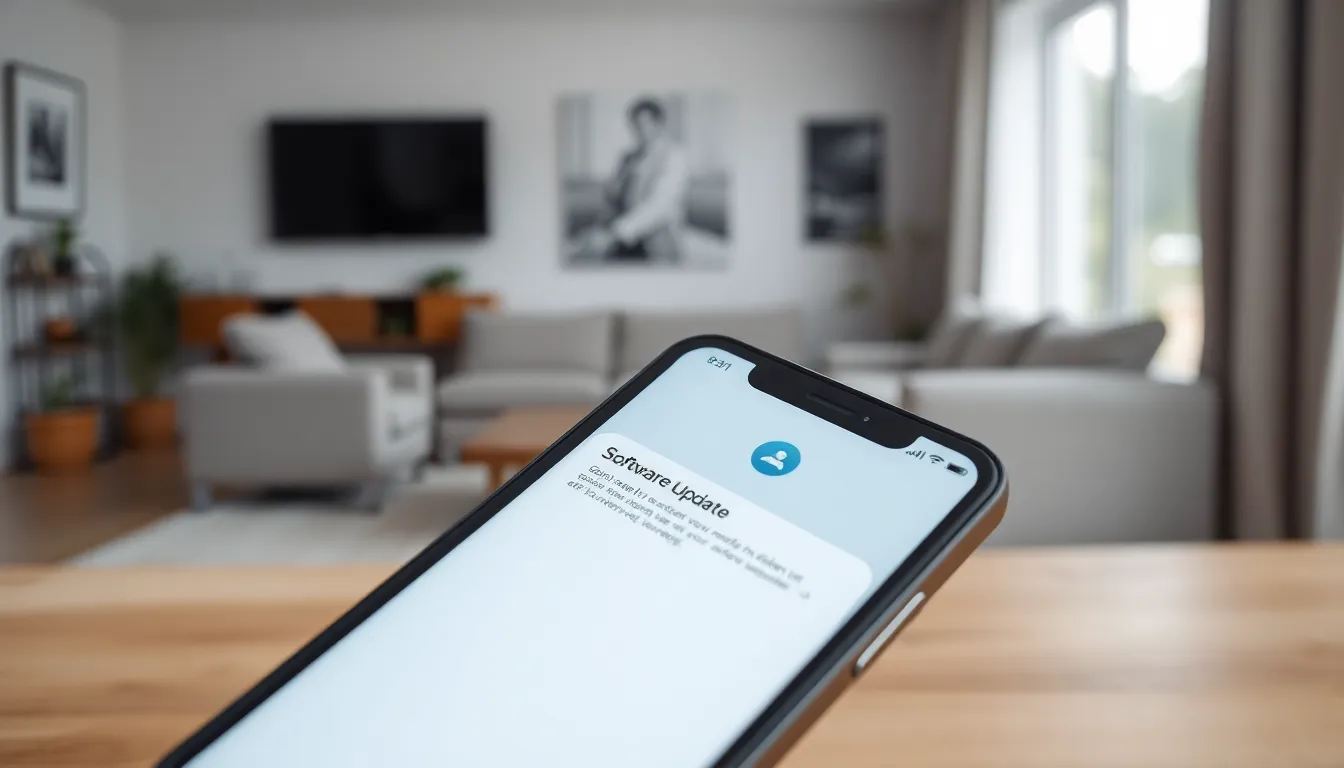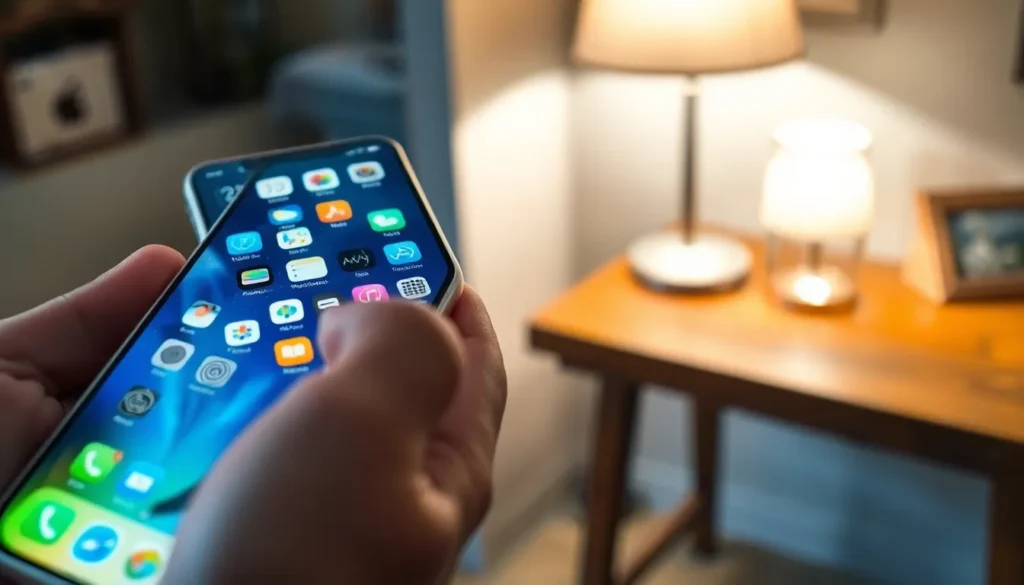Is your iPhone’s battery life vanishing faster than your motivation on a Monday morning? You’re not alone. Many users find themselves in a frantic race to keep their devices alive throughout the day, only to be met with the dreaded low-battery warning. It’s like having a pet goldfish that keeps jumping out of its bowl—frustrating and baffling.
But fear not! Understanding why your iPhone drains its battery so quickly can be a game-changer. From pesky background apps to those sneaky location services, there are plenty of culprits at play. Dive into the world of battery management and discover tips to keep your phone charged and your sanity intact. After all, nobody wants to be that person desperately searching for an outlet at a coffee shop.
Table of Contents
ToggleCommon Reasons for Fast Battery Drain
Several factors contribute to the rapid battery drain on iPhones. Understanding these reasons helps users manage their device’s performance effectively.
Background App Activity
Background apps consume power even when not in use. Apps like social media and streaming services may run processes in the background, leading to increased battery usage. An average user has multiple apps open simultaneously, which amplifies this issue. Users can check battery settings to identify power-hungry apps and close them when necessary. Limiting background app refresh can also significantly improve battery life.
High Screen Brightness
High screen brightness levels greatly impact battery life. A bright display requires more power to function, leading to faster drain. Users often keep their screens at maximum brightness for better visibility. Setting the brightness to automatic or lowering it manually can enhance battery retention. Additionally, enabling Night Shift reduces power consumption by altering color temperature, which decreases energy use.
Location Services Usage
Location services play a crucial role in battery consumption. Frequent use of GPS and location-based apps necessitates additional energy. Many apps continuously access location data in the background, worsening battery drain. Users should adjust location settings for apps, opting for “While Using” instead of “Always.” Disabling unnecessary location services improves battery performance significantly.
Software Issues

Software-related problems often contribute to rapid battery drain on iPhones. Many users overlook the importance of keeping their iOS updated, which can include essential fixes.
Outdated iOS Version
An outdated iOS version can hinder battery performance. Apple regularly issues updates that not only improve security but also optimize battery management. Ignoring these updates may result in compatibility issues and inefficient energy use. Users can check for updates by navigating to Settings, then General, and finally Software Update. Regularly updating ensures that devices benefit from enhancements designed to extend battery life.
App Compatibility Problems
Incompatible apps can also lead to faster battery drainage. Some applications may not function optimally with the current iOS version, resulting in increased background activity. Users should review app updates in the App Store to eliminate compatibility issues. Uninstalling problematic apps can also help maintain battery health. Monitoring battery usage in the Settings menu highlights which apps consume excessive power.
Hardware Factors
Hardware elements significantly impact battery performance on an iPhone. Vital factors include battery age and health as well as external conditions.
Battery Age and Health
Battery age plays a crucial role in overall performance. Lithium-ion batteries, like those in iPhones, degrade over time. Typically, battery health diminishes after 500 charge cycles, leading to diminished capacity. Users can check battery health under Settings > Battery > Battery Health. A battery showing less than 80% capacity warrants replacement for optimal performance. Deterioration can lead to faster power drain, impacting daily usage significantly.
External Conditions
External conditions affect battery life more than many realize. Temperature extremes can significantly impact battery performance. Cold environments may cause the battery to drain more quickly, while excessive heat can lead to permanent damage. Additionally, using iPhones in areas with poor signal strength forces the device to work harder, leading to increased power consumption. Maintaining moderate temperatures and ensuring solid signal strength help preserve battery health.
Tips to Improve Battery Life
Improving battery life on an iPhone involves several practical adjustments. Users can implement changes in settings and utilize features designed to conserve battery.
Adjusting Settings
Adjusting settings offers a straightforward way to extend battery life. Reducing screen brightness immediately impacts power consumption. Users can also set the Auto-Lock feature to dim the display after a shorter period of inactivity. Disabling background app refresh for certain applications helps minimize unnecessary energy use. Turning off push email fetch and opting for manual retrieval prevents constant updates that drain the battery. Additionally, reviewing notifications and limiting push notifications from non-essential apps can save power, as less frequent alerts require less energy.
Using Low Power Mode
Using Low Power Mode provides an effective solution for extending battery life when levels are low. Enabling this feature reduces background activity, optimizes performance, and temporarily disables non-critical functions. Users can turn on Low Power Mode in the Settings menu under Battery, or quickly access it through Control Center. Power-hungry activities like mail fetching and automatic downloads are paused, leading to significant energy savings. Notifications also become less frequent, which aids in maintaining battery level during urgent situations.
Understanding why an iPhone loses battery so fast is crucial for effective management. By identifying factors like background app activity and location services users can take proactive steps to enhance battery life. Adjusting settings and keeping apps updated can make a significant difference in performance.
It’s also important to consider hardware aspects such as battery age and health. Regularly checking battery health and replacing aging batteries can ensure optimal device performance. By implementing these strategies users can enjoy longer-lasting battery life and reduce the anxiety of searching for a charger in daily life.








